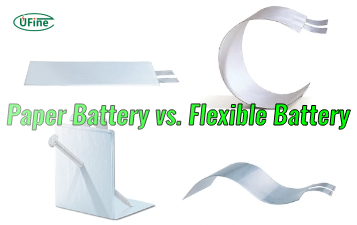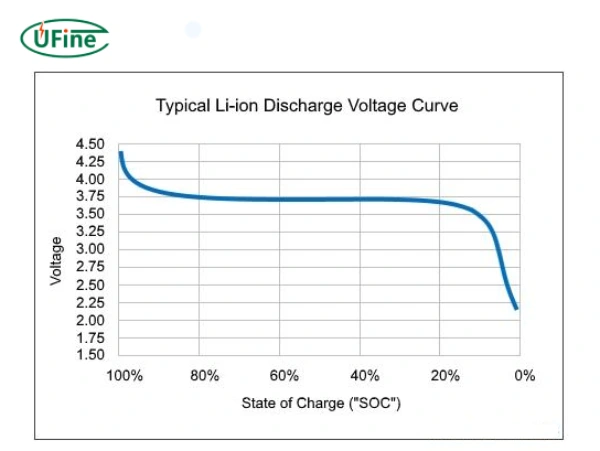Part 1. Introduction
LiPo (Lithium Polymer) battery voltage plays a critical role in determining the performance and safety of these rechargeable power sources. Like other lithium-based batteries, LiPo cells have a nominal voltage rating influencing their performance and safe usage.
Part 2. LiPo battery voltage analysis
LiPo batteries typically have a nominal voltage of 3.7 volts per cell, similar to many other lithium-ion batteries. However, depending on the configuration, they can also be found in variants with higher voltages, such as 7.4 volts (two cells in series) or 11.1 volts (three cells in series).
The number of LiPo cells directly affects the LiPo battery pack as well. Single-cell LiPo batteries discharge between 4.2V fully charged and 3.0V when depleted. In contrast, a two-cell 7.4V LiPo battery pack voltage ranges from 8.4V to 6.0V, respectively.
Higher voltages extend per-charge runtimes but also place greater stresses on connected electronic speed controllers and motors, requiring more robust ratings.
It’s, therefore, important to confirm a LiPo pack voltage matches the rated tolerance of associated equipment.
Part 3. LiPo battery minimum voltage
Lithium polymer battery packs should not be fully discharged below certain cell voltage minimums for safety and longevity reasons. The absolute lowest level generally accepted is 3.0 volts per cell. Discharging below this point stresses electrochemical processes and can degrade performance over time.
A slightly higher per-cell cutoff of 3.2-3.3 volts for most non-critical applications minimizes wear while fully using the batteries’ capacity. This balance ensures they may continue functioning for their expected lifespan of dozens of charge cycles. Certain specialty batteries designed for maximum cycle life may be rate-limited above 3.5 volts.
Part 4. LiPo battery max voltage
During the charging process, the LiPobattery max voltage threshold for lithium polymer batteries is an important specification for safe operation. While performance can be gained by overcharging slightly, it comes at the cost of significantly reduced cycle life.
The consensus in the hobby sector is a per-cell LiPo battery voltage ceiling of 4.2 volts, corresponding to 12.6 volts for a common 3s 11.1v battery pack. Exceeding this voltage activates protective circuitry that terminates charge current flow.
Manufacturers sometimes rate specialty high-drain cells slightly higher up to 4.25v. Still, these require advanced chargers calibrated carefully for each chemistry. Overall, it’s best to avoid exceeding the specs suggested by the brand and retailer.
Part 5. LiPo battery voltage quick chart
Part 6. Relationship between LiPo battery voltage and charging
Here are a few key points about the relationship between LiPo battery voltage and charging:
- LiPo cell voltage rises as the battery accepts current during the charging process. A fully discharged 3.7V/cell battery will reach 4.2V at full charge.
- The balance between charge current and voltage is important. Applying too much current too quickly can cause overheating and damage. Slow, controlled charging is best.
- When charging is completed, the charger temporarily delivers a low “maintenance charge” current to overcome voltage depression caused by the chemical reactions.
- Most modern chargers utilize “Constant Current, Constant Voltage” charging – entering constant voltage mode at 4.2V/cell to carefully monitor voltage rise instead of current.
- As the charge tapers, the battery reaches “Capacity Balance,” where all cells are fully charged but unable to accept more power without overvoltage.
- Voltage awareness helps determine charge state – a near-full battery may read 4.15V. At the same time, one at 3.8V needs substantially more time on the charger.
- Both undercharging and overcharging can damage batteries over repeated cycles by causing chemical imbalances. Voltage dictates when charging should start and stop.
Part 7. Relationship between LiPo battery voltage and capacity
The relationship between the voltage and capacity of a LiPo battery is complex and influenced by various factors.
However, some general trends can be observed.
The relationship between voltage and capacity in a LiPo battery is indirect. As the battery discharges, LiPo battery voltage gradually decreases. The rate at which the voltage drops depends on the load applied and the battery’s internal resistance. Typically, LiPo batteries have a relatively flat voltage curve during most of their discharge cycle, where the voltage remains relatively constant until it reaches a certain point, often referred to as the “knee” of the discharge curve. After the knee, the voltage drops more rapidly.
While the capacity of a LiPo battery determines its runtime, the voltage indicates the state of charge and varies during the discharge cycle. The LiPo battery voltage generally drops as the battery discharges. Still, the specific relationship between voltage and capacity can vary based on factors such as the load, internal resistance, and specific battery chemistry.
Part 8. How does LiPo battery voltage affect battery life?
LiPo battery voltage has a profound effect on its overall performance and longevity. This voltage level optimizes energy output and component longevity within the chemistry’s safe operating limits.
- Overcharging voltage too high: This causes undue stress on the battery and can lead to housing swelling or thermal runaway. Lithium polymer batteries should be charged to no more than 4.2V per cell.
- Undercharging voltage is too low: Not fully charging the battery reduces its capacity over time. Lithium cells should be charged to at least 3.8V per cell to maximize cycle life and energy capacity.
- Voltage during use drops below the LiPo battery minimum voltage: Allowing the voltage to dip below 3.0V per cell places undue stress on the electrolyte, and battery internal resistance rises noticeably. This impacts performance and shortens the battery’s useful lifespan.
- Inconsistent storage voltage: Storing LiPo batteries either fully charged or too depleted for long periods is detrimental. An ideal voltage range of 3.8V – 3.9V per cell extends shelf life between use cycles.
- Voltage imbalance between LiPo cells: Cells within a single LiPo pack should maintain voltage levels within 0.1V of one another. Large imbalances impair overall capacity and can cause permanent damage or thermal runaway in extreme cases. Regular balance charging is recommended.
Part 9. How to monitor lipo battery voltage?
You can use various methods and devices to monitor the voltage of a LiPo battery. Here are a few common approaches:
- LiPo Voltage Checker: A LiPo voltage checker is a small and portable device specifically designed to measure the voltage of LiPo batteries. It typically plugs directly into the balance connector of the LiPo battery. It displays the individual cell voltages as well as the total pack voltage. Some voltage checkers also have features like low voltage alarms and capacity checking.
- Multimeter: A multimeter is a versatile tool that can measure various electrical parameters, including voltage. Set your multimeter to the appropriate voltage range (DC voltage) and connect the positive (red) probe to the positive terminal of the battery and the negative (black) probe to the negative terminal. This method allows you to measure the overall voltage of the battery pack.
- Battery Voltage Alarm: Battery voltage alarms are small devices that can be connected to the balance connector of the LiPo battery. They typically have a loud buzzer and an LED display that indicates the voltage level of the battery pack. You can set a specific voltage threshold, and if the battery voltage drops below that level, the alarm will sound, alerting you to recharge the battery.
- Flight Controller/Power Distribution Board: If you use a LiPo battery for an RC aircraft or a drone, the controller or power distribution board may have built-in voltage monitoring capabilities. These systems often display the battery voltage on an onboard display or transmit the information to a ground station or receiver.
Part 10. LiPo battery applications with different LiPo battery voltages
LiPo battery voltage directly impacts the power output and capacity of the battery, influencing its suitability for different applications.
- Higher LiPo battery voltage configurations offer increased power and energy density, making them ideal for high-performance devices like RC vehicles or drones.
- Meanwhile, lower LiPo battery voltage variants are better suited for smaller gadgets like smartphones or portable electronics.
Related Tags:
More Articles

Paper Battery vs. Flexible Battery: What’s the Difference and Which Is Better?
Paper vs. flexible batteries: learn the key differences, benefits, and which power source fits best for wearables, sensors, and smart tech.
What to Know Before Buying a Tiny LiPo Battery for Your Project
Tiny LiPo batteries are powerful and compact. Learn how to choose the right one for your project with specs, safety, and charging tips.
Bloated LiPo Battery: Will It Explode?
Will a bloated LiPo battery explode? Discover the causes, risks, safety steps, and expert tips to avoid disaster and protect your gear. Must-read safety guide!
12V 100Ah Lithium Ion Battery Price: Full Guide
Learn about 12V 100Ah lithium-ion battery price, from cost ranges to best brands, hidden fees, and how to get the best deal. A must-read for smart buyers!
Resistance and Conductivity: What It Means for Your Lithium Batteries
Resistance and conductivity impact lithium battery performance, lifespan, and safety—learn how they work and why they matter.







